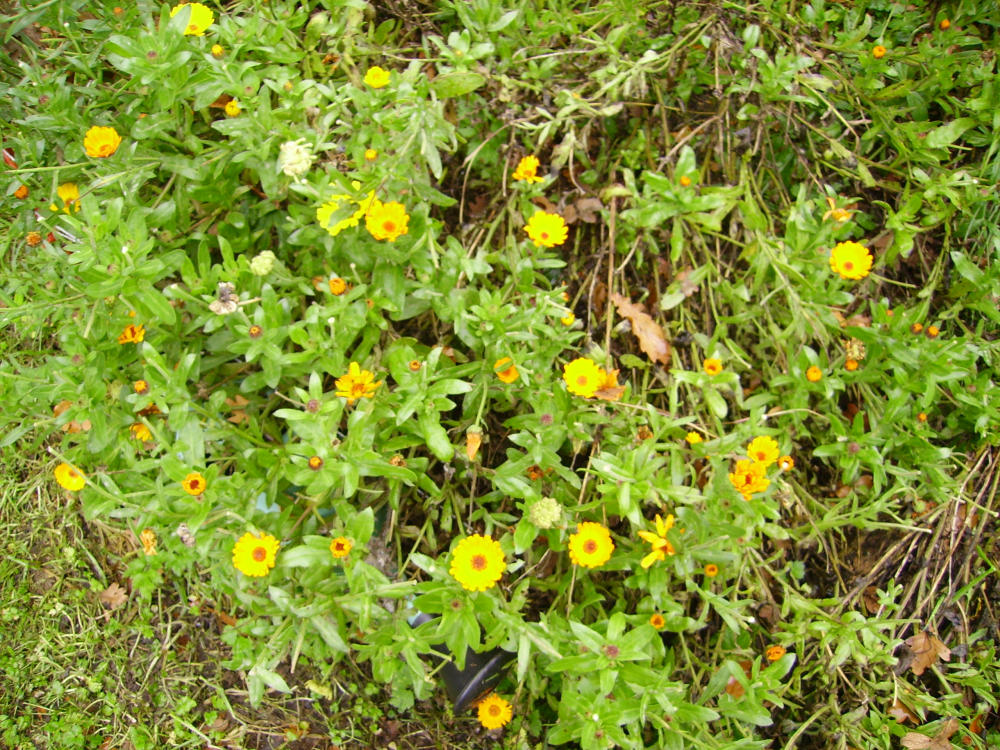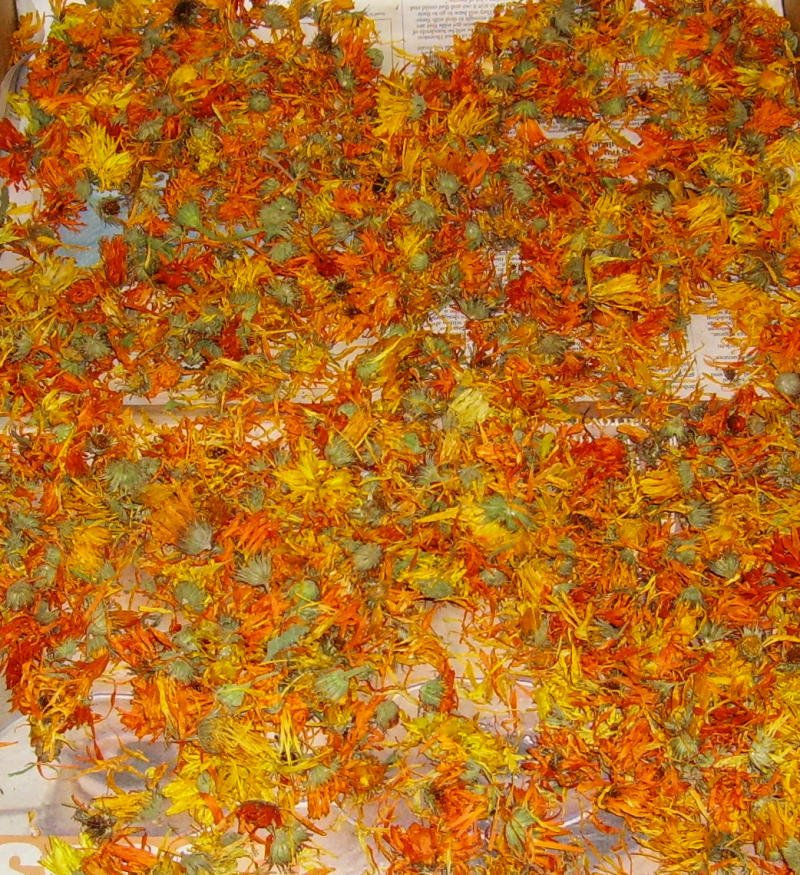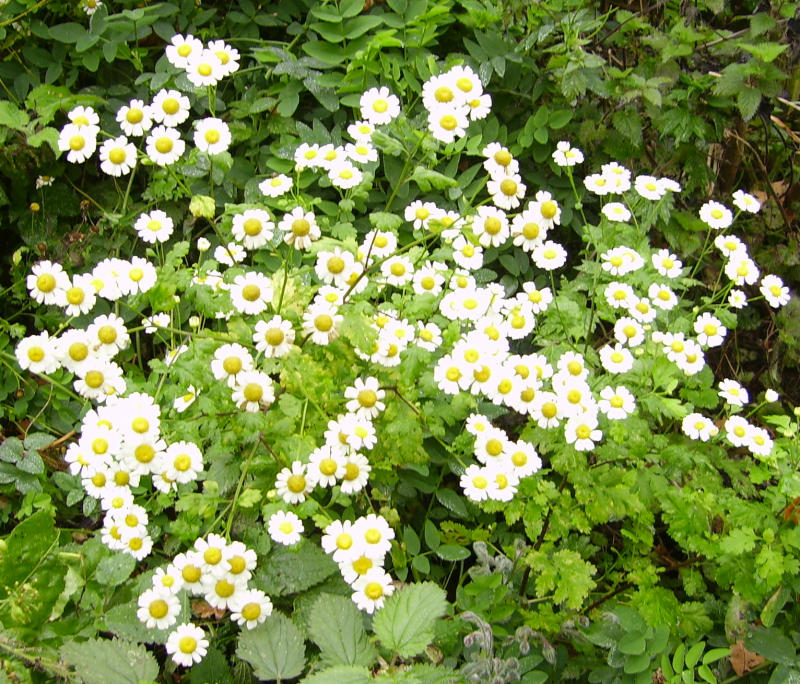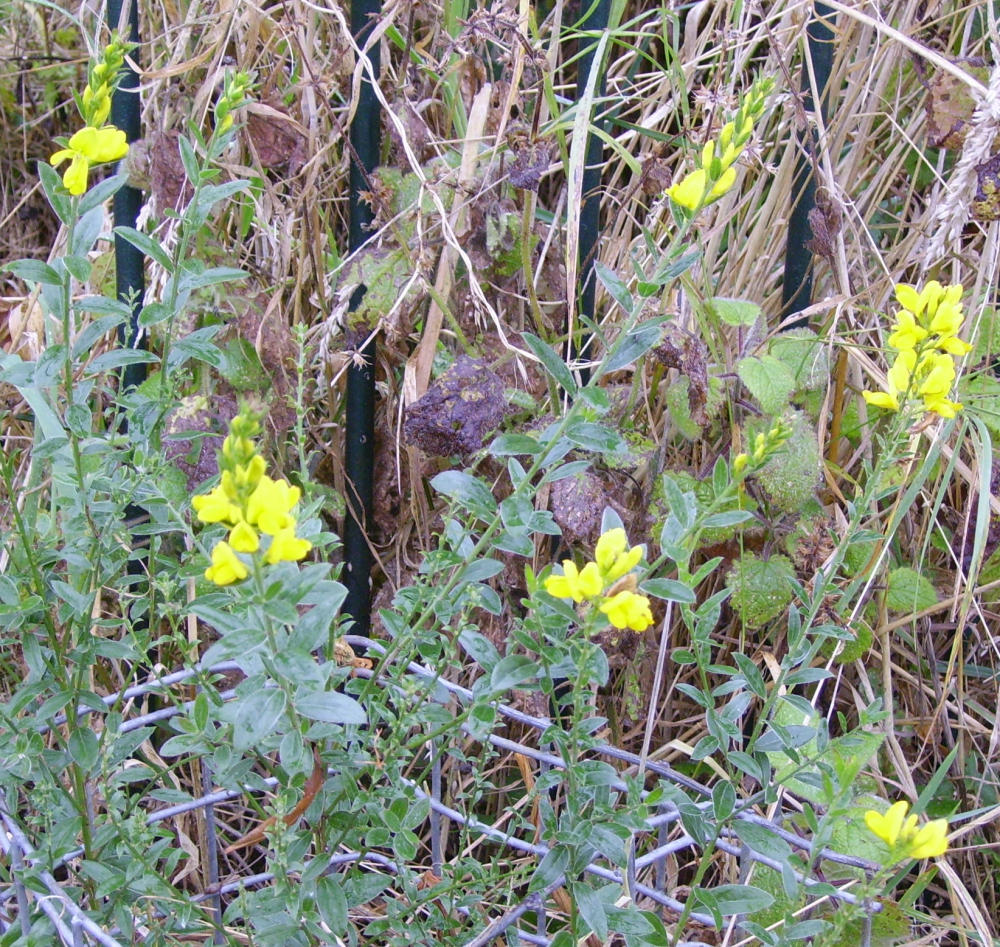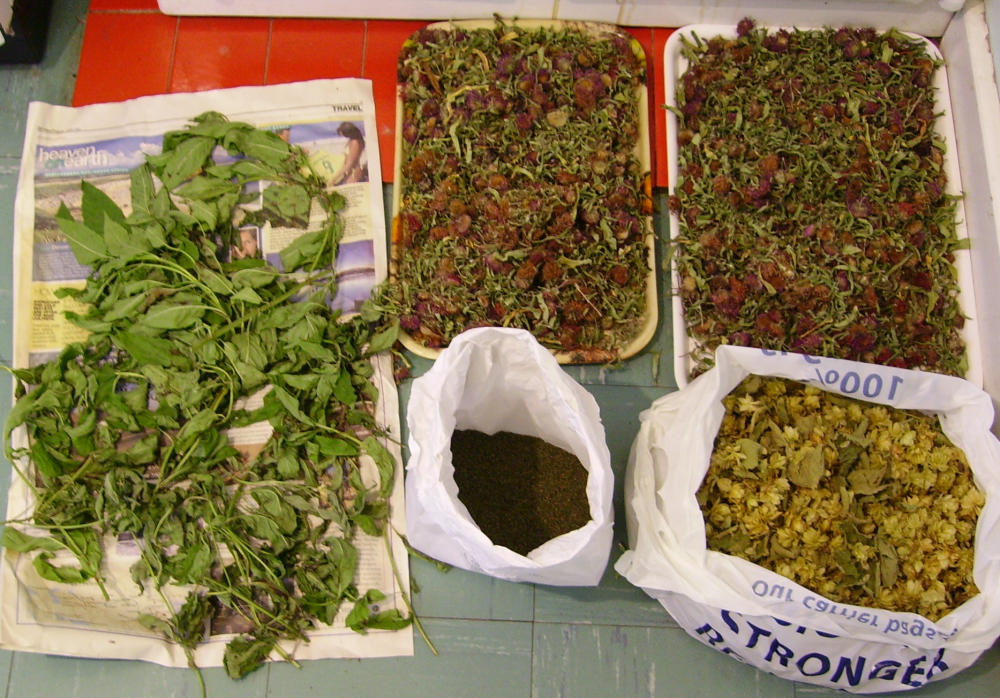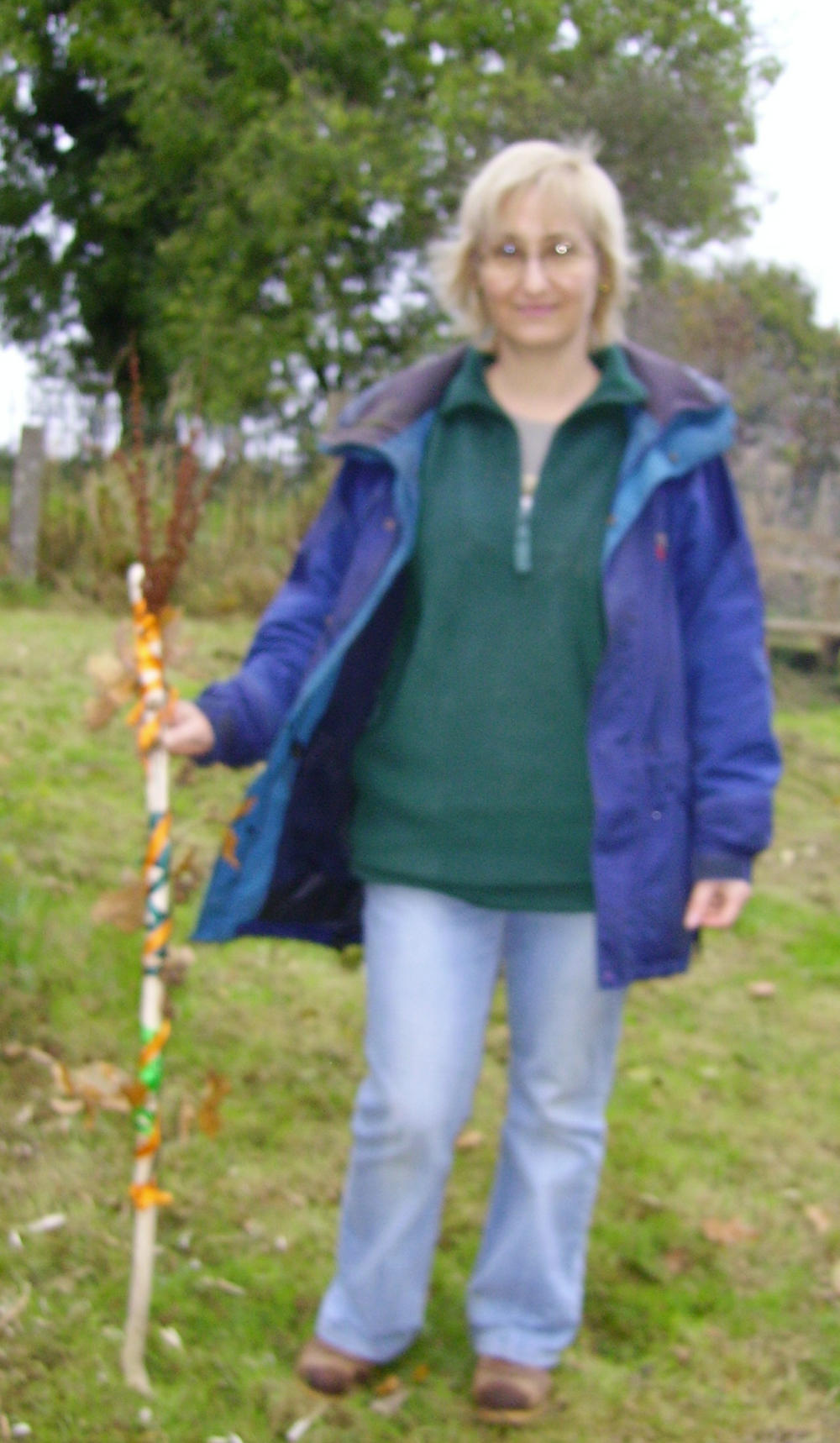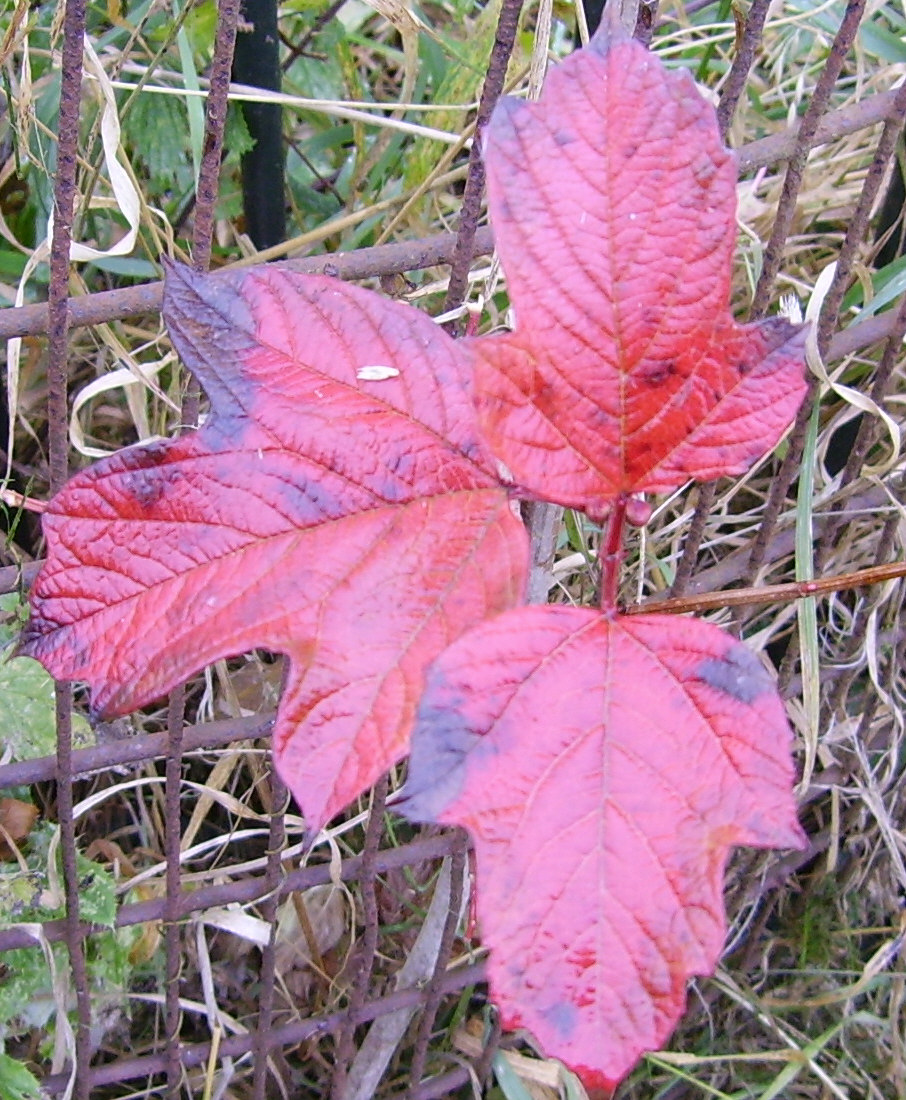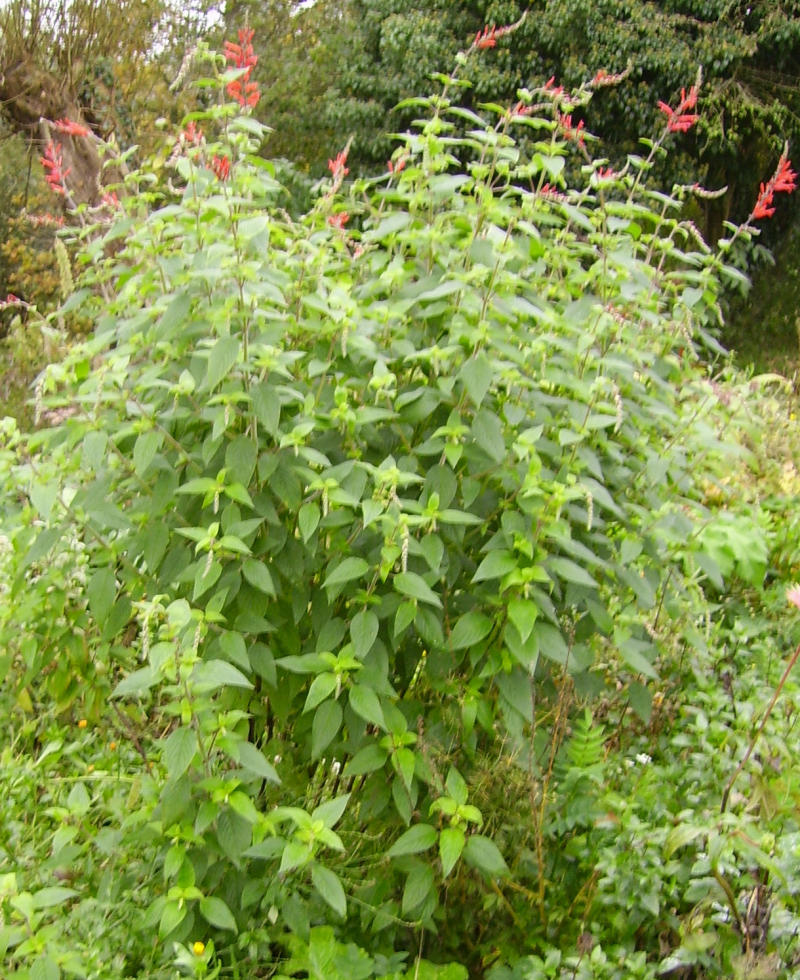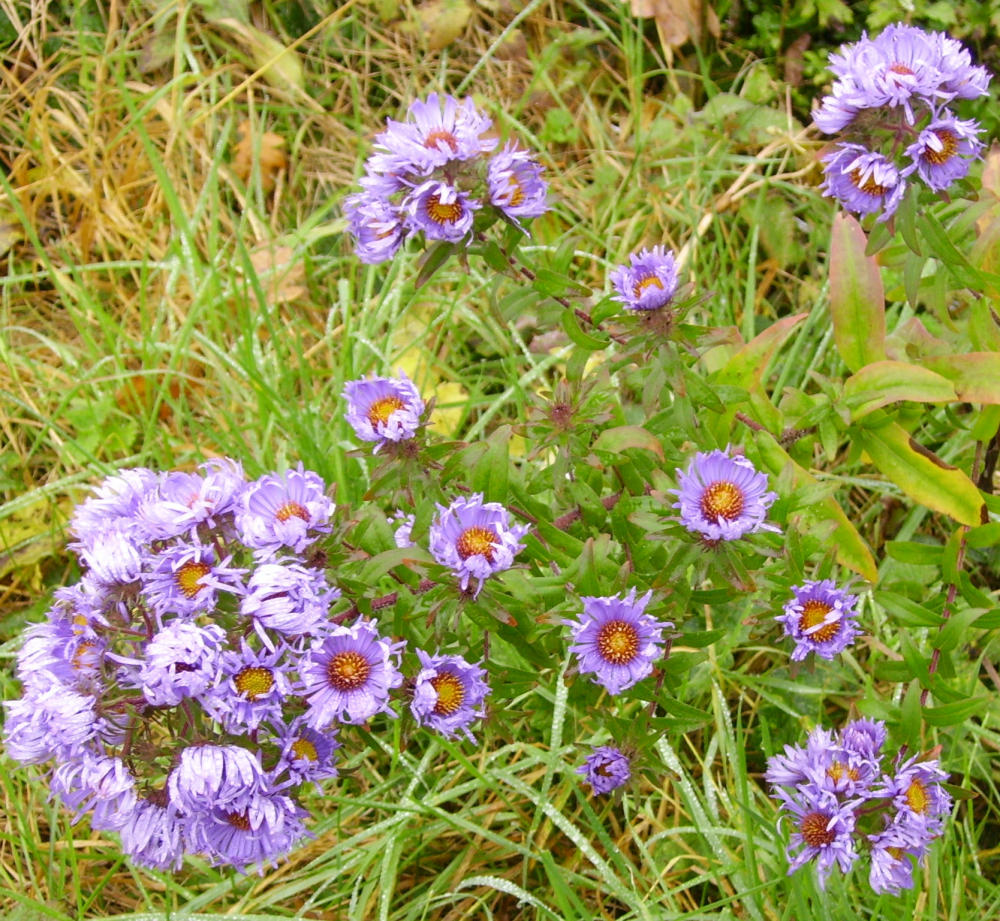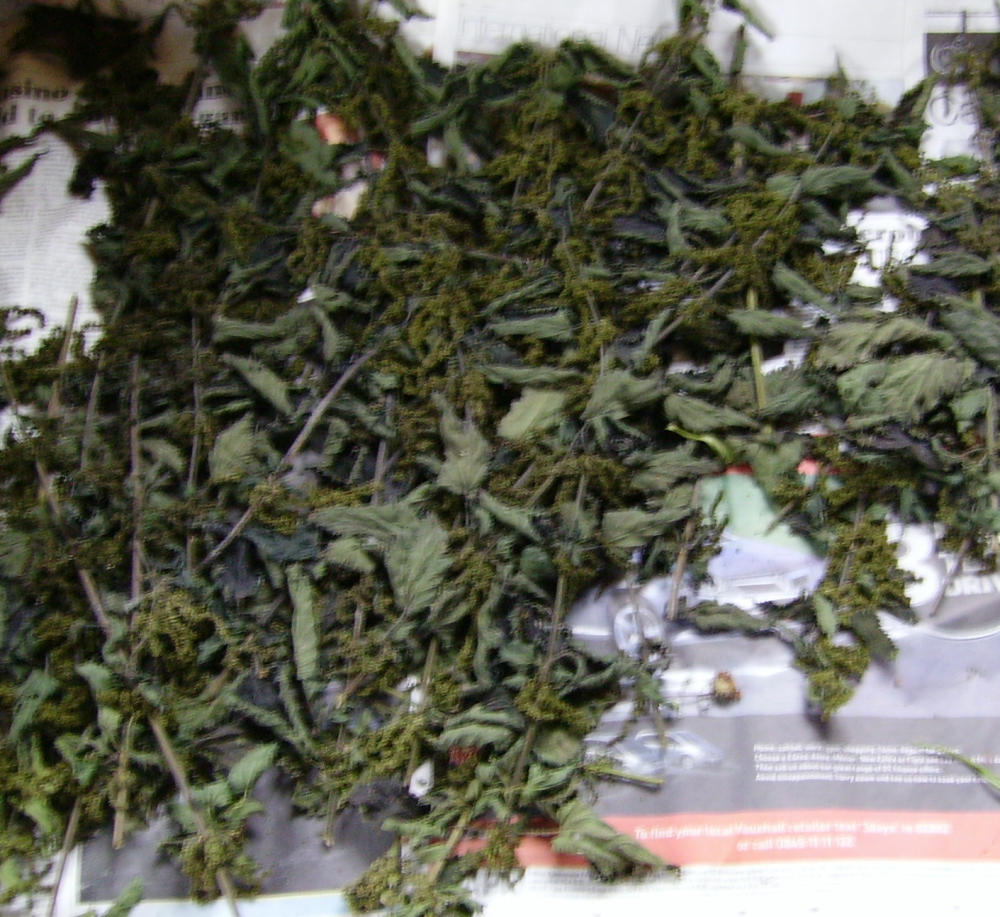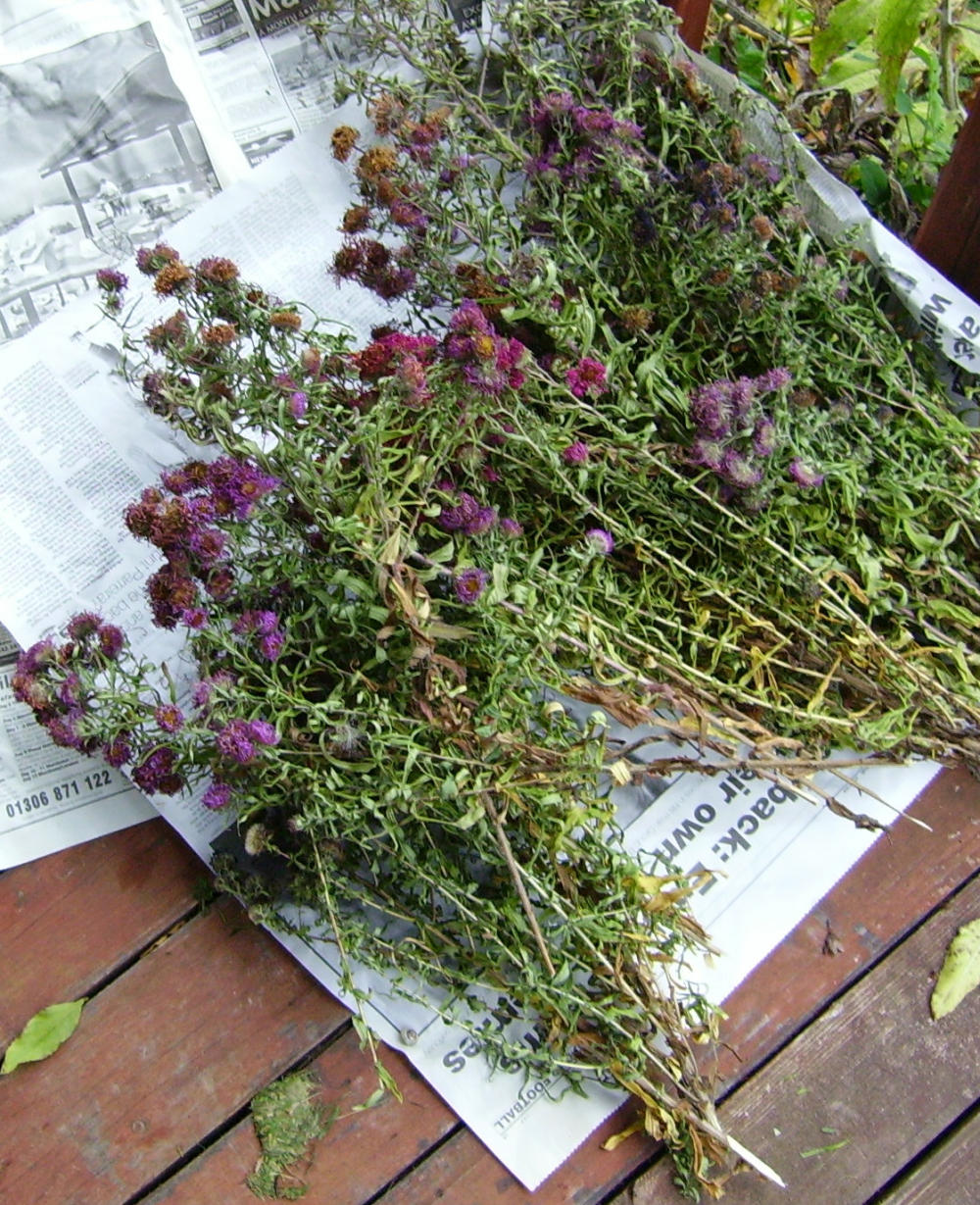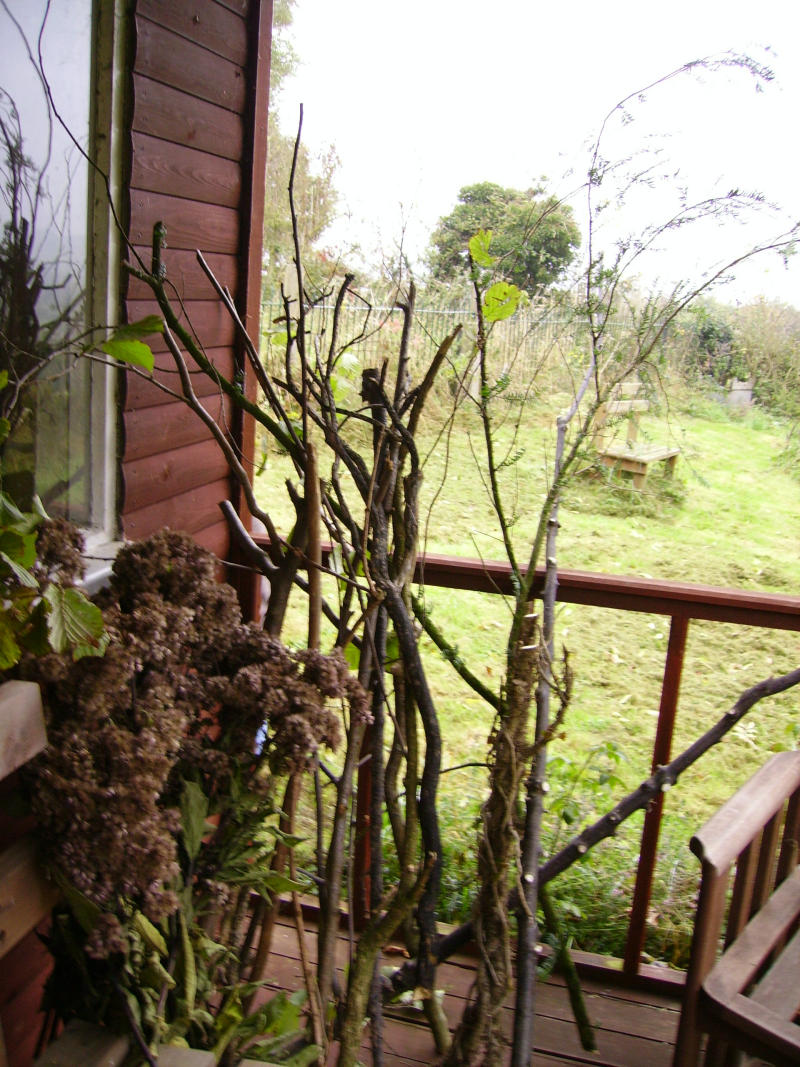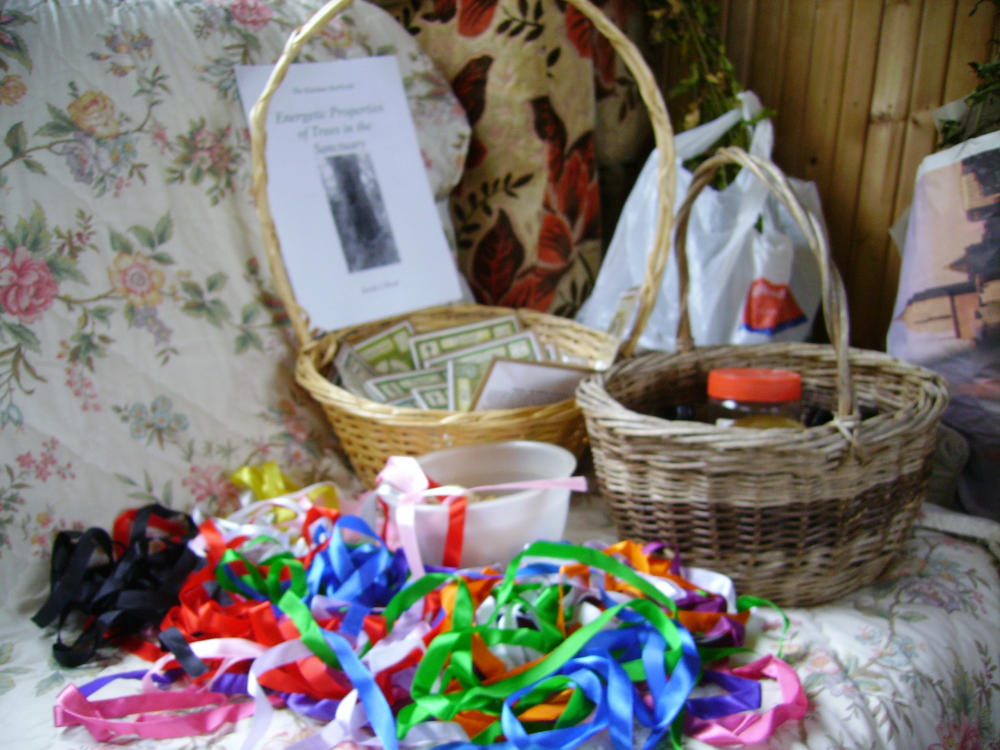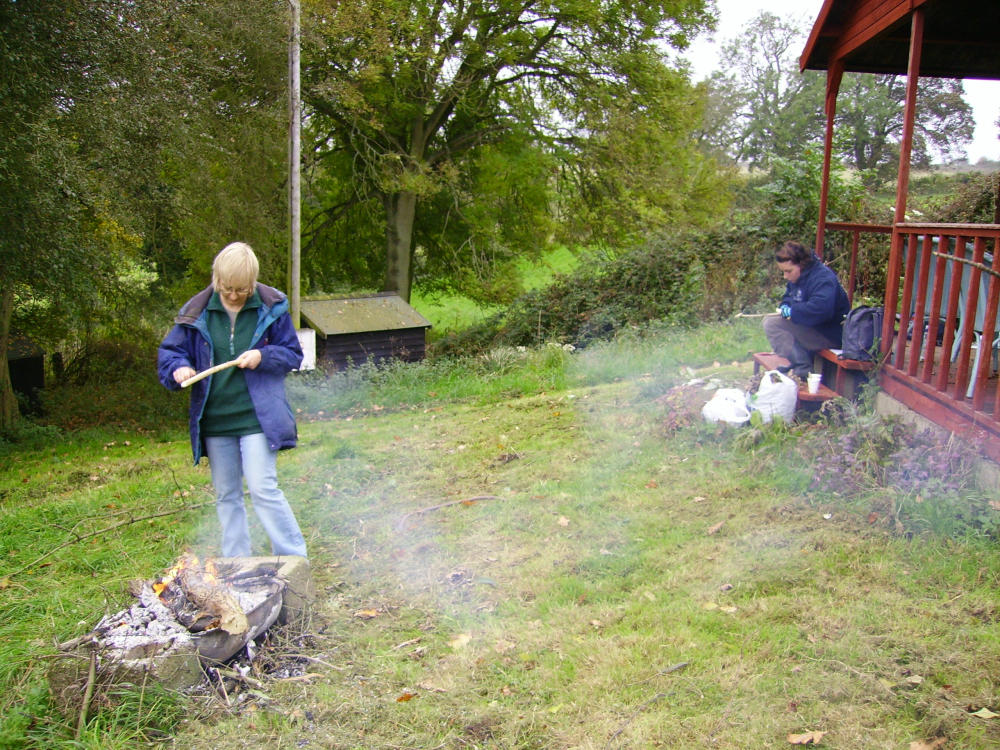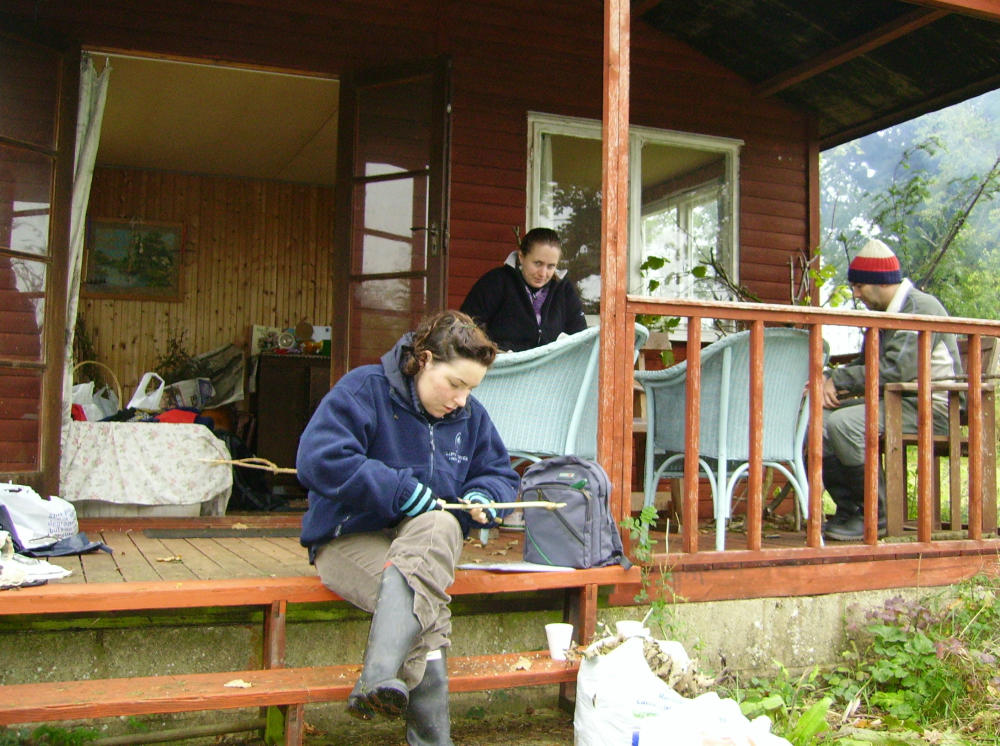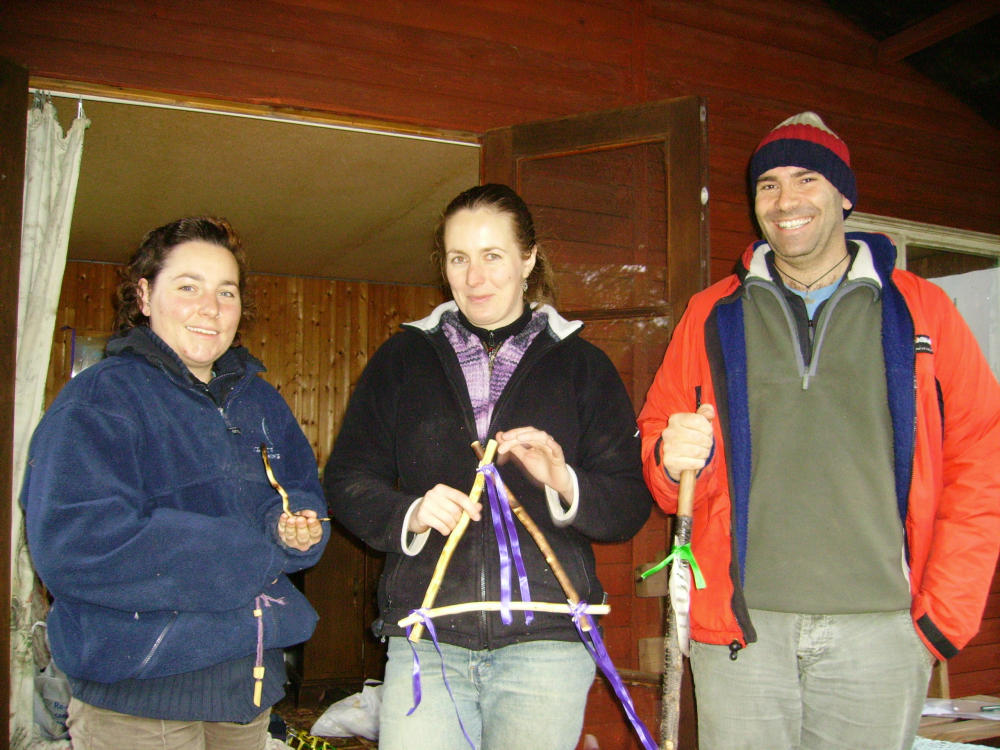
|
Diary - 10/07 |
|
October 2007
Around the hedgerows, reds shine brightly, be they rosehips or haws – each with their subtle shades of colour ranging from bright red to deep crimson. If you’re lucky, you might even find the bright vermillion of ripe rowan berries hanging above you in tantalising bunches. Then the decision might be – do I dry bunches for decoration or experiment with bitter rowan jelly? So far I have always gone towards the former. Having been given a jar of jelly last year, which is still sitting half eaten in my fridge, too bitter for anyone’s pallet, I don’t feel tempted to try making my own.
The other red this year has been from apples. Usually crabapples go from green to yellow once they are ripe and fall from the trees. Along one Cotswold wall leading down into the village is a red crabapple tree, its fruit shining out above the green brambles and speckled Cotswold stone wall. A neighbour’s new apple tree has hung over our garden hedge amongst the runner beans providing shiny red apples to augment the passionflower.
The St John’s wort oil has been another bright red influence on my life over the summer, sitting on the window ledge in my kitchen and beaming a beautiful scarlet colour when the sun shone. The beginning of October seemed time to strain the flowers out of the oil and put it all away in the cold larder (see September's diary entry to see the oil infusing). I still have one jar sitting in the windowsill which seems determined not to turn red, so I may have to heat it up and see what happens.
The other major colour of autumn is black – blackberries, elderberries and the deep black/purple lustre of a copious sloe harvest hiding behind the thorns of the blackthorn trees.
I rarely collect rosehips, as I don’t tend to use them during the winter, although I really should. This year, they seemed so prolific, I relented and gathered on three different occasions. The only problem with rosehips is the time it takes to process the haws before drying. You should cut them in half with a sharp knife and then thoroughly deseed before putting to dry in a warm airy place. The seeds are very effective itching powder, so my long-suffering husband, who offered to help, was soon complaining that his t-shirt was uncomfortable and his hands were itching. I didn’t suffer quite as badly, but holding the individual hips made my thumb joints ache, so very few got put to dry and the majority are still shrivelling on the kitchen table and may get thrown in a demonstration elderberry syrup in November.
We usually think of blackberries as something to put in desserts, either pies or puddings, but blackberries, like rosehips, are a good source of Vitamin C. They can also act as an astringent along with cinnamon if you’re suffering with loose bowels that won’t respond to the usual treatment of one day’s starvation and then gradual re-introduction of dry food. They make a delightful tea along with other herbs. We tried Echinacea and elderberry as a pleasant immune enhancer to ward off any lurking virus at the September workshop.
I continue to wax lyrical about elderberry and its anti-viral properties. My parents have helped collect large amounts of berries so we could make a new Elderberry Elixir. The recipe came from Kiva Rose’s website. This is made with brandy and honey and takes at least two months to mature, so I’ve not tasted it yet. I’ve also put up several jars of elderberry tincture which have yet to be decanted and made three 1 lb jars full of elderberry syrup using the leftover elderberries. There are more elderberries waiting in the freezer to be made into more syrup during my first home-based workshop in November.
Sloe gin was also not something I was intending to make this year, but the juicy, purple, blushing sloes almost begged to be picked from their twigs, so I acquiesced and bought more gin to make up a bottle and a half of liqueur which is sitting in the hot cupboard alongside the vinegars and will be ready for Christmas.
The calendula flowers have been prolific rays of sunshine this year to cheer everyone up. One of the women who attended some of the workshops two years ago was convinced calendula was helpful in combating her winter blues and judging by the delight the flowers have brought to this year’s participants, I totally agree with her. The softness of the petals make them a joy to harvest, while the resin which stays on your hands afterwards to remind you just what you’ve been picking. This year we were able to make a fresh flower tincture and it will be interesting to see how it tastes and acts.
The flowers take a long time to dry and then the processing itself is an exercise in patience. I had two weekends in October to spend processing my herbs. The first one was spent decanting and putting up more tinctures, while the second one was dedicated to all the dried herbs I gathered during the summer. This included stripping petals from all the calendula flowers which took over two hours sitting at the kitchen table balancing the bowl on my lap before pouring them into their glass jars and hiding them from the light in paper bags.
I learned one useful lesson this year – don’t dry lavender heads alongside other herbs. They need their own paper bag so that when the separate petals fall off, they can be collected from the bag and not lost amidst the debris of everything else!
It was very interesting crumbling the dry mullein seeds and flowers from the flower stalks. They were very hard, but when they were all safely in their jars, they did resemble the mullein I purchased from a mail order firm many years ago. I now have to decide whether I leave it all to make tea for nasty chest infections or use one of the jarfuls to make ear ache oil for children.
Bergamot was a new herb for me this year. The scarlet flowers were another ray of red amidst the green. Most of the aerial parts I harvested have been used for tincture, but I shall be looking for any stray leaves or flowers to dry this coming weekend. One of my bugbears over the past years has been the flavour of “cold tea” since I loathe peppermint unless it’s very hot or I’m suffering from a nasty tummy bug and I can’t drink anything else.
I was delighted to hear from Jim MacDonald, an American herbalist in Michigan, that I can substitute peppermint for a whole long list of herbs, including bergamot and New England Aster. The asters have been a glorious range of purples, blues and reds in the top herb bed and I’ve dried as much as I can. I’m looking forward to seeing how they work. Apparently I can add a tincture to a “cold tea” as long as the whole is drunk hot and not cold.
It has been a great joy to find a use for nettle seed this year. It always seemed so frustrating once the nettles flowered and could not be used for tea any more because of the propensity to irritate the bladder. Now I know nettle seeds are a good method of supporting exhausted adrenal glands, I have been harvesting hundreds of stems laden with heavy strands of seeds, drying them flat on pages of old newspaper hidden from the sun.
Once dry, the seeds are incredibly light and can be sieved through a metal sieve to collect in plastic bowls prior to storing in glass jars. The seeds float in liquid, so can’t be drunk with water, but it’s easy to add them to morning cereals or yoghurt.
Nettle roots are also a useful tool in managing or preventing prostate difficulties, so that is something else I’ve been harvesting this autumn. The huge pile of golden roots took several hours to wash, dry and then cut into small pieces before covering them with vodka to make a tincture. We shall see how Chris gets on with his new “medicine” over the winter! |
|||||||||||||||||||||||||||
|
||||||||||||||||||||||||||||
|
Content Copyright © 2007 - Springfield Sanctuary. All rights reserved |
